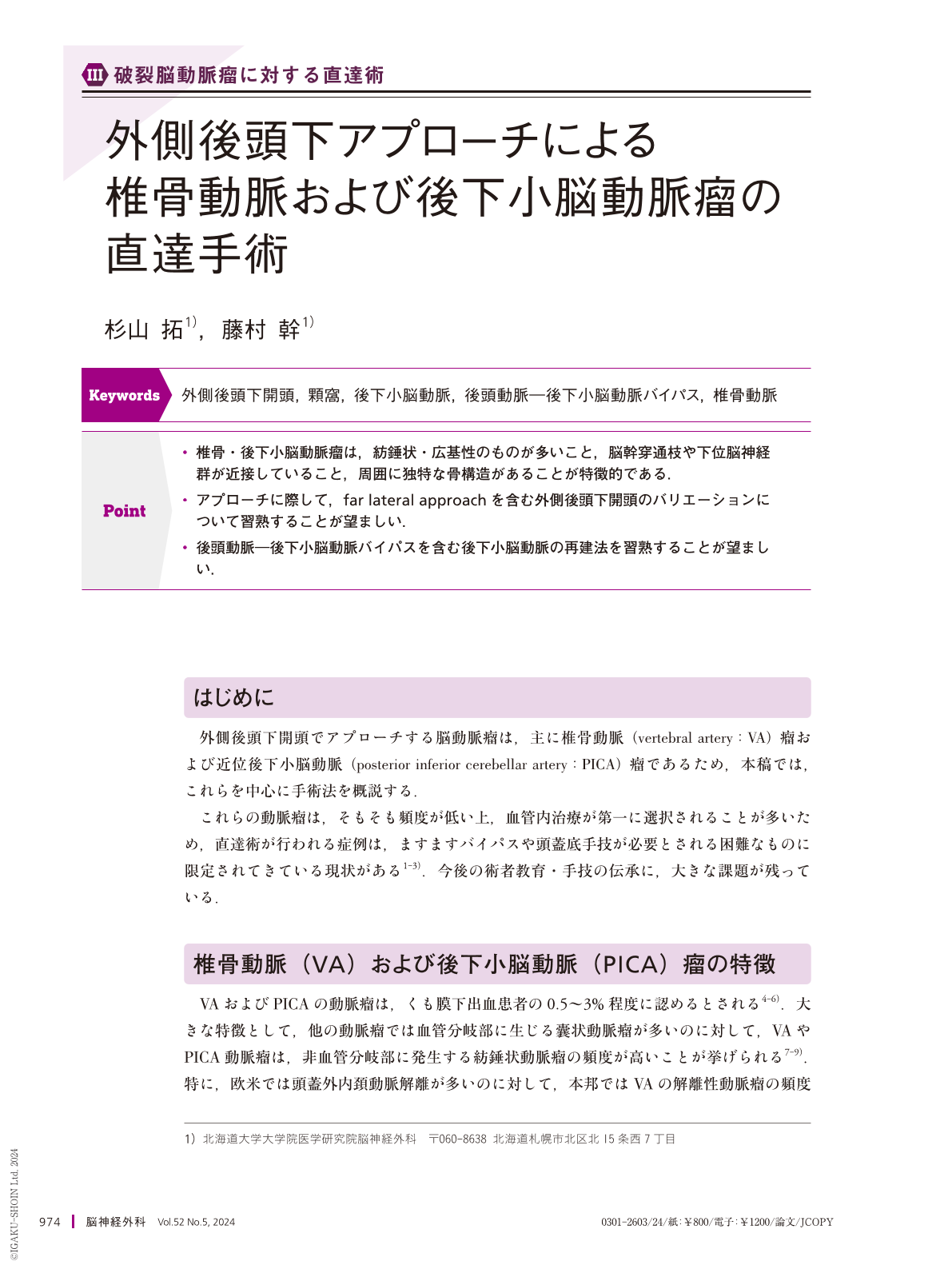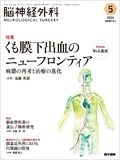Japanese
English
- 有料閲覧
- Abstract 文献概要
- 1ページ目 Look Inside
- 参考文献 Reference
Point
・椎骨・後下小脳動脈瘤は,紡錘状・広基性のものが多いこと,脳幹穿通枝や下位脳神経群が近接していること,周囲に独特な骨構造があることが特徴的である.
・アプローチに際して,far lateral approachを含む外側後頭下開頭のバリエーションについて習熟することが望ましい.
・後頭動脈—後下小脳動脈バイパスを含む後下小脳動脈の再建法を習熟することが望ましい.
*本論文中、[Video]マークのある図につきましては、関連する動画を見ることができます(公開期間:2027年10月まで)。
Among ruptured intracranial aneurysms, aneurysms of the vertebral artery(VA)and posterior inferior cerebellar artery(PICA)are relatively rare, and they exhibit distinct characteristics. These include: 1)a high frequency of diverse aneurysmal morphologies, such as fusiform or dissecting aneurysms; 2)proximity to the lower cranial nerves; 3)the presence of perforators to the medulla oblongata; and, 4)obstruction to the surgical approach by specific bony structures, such as the occipital condyle and jugular tubercle. Consequently, these aneurysms often require interventions that are more complex than simple clipping or coiling, which is typical for anterior circulation aneurysms. Interventions include skull base techniques such as the far-lateral approach and revascularization procedures such as occipital artery(OA)-PICA bypass. Despite these complexities, the rarity of these aneurysms and the recent advancements in endovascular procedures pose challenges for young neurosurgeons in acquiring adequate microsurgical experience. This narrative review addresses the clinical features of VA and PICA aneurysms, the history and variations in the lateral suboccipital approach for these aneurysms, and several bypass techniques for reconstructing the PICA. Lastly, we illustrate our current microsurgical practices through a case presentation accompanied by a surgical video showcasing both the far-lateral approach and the OA-PICA bypass.

Copyright © 2024, Igaku-Shoin Ltd. All rights reserved.


